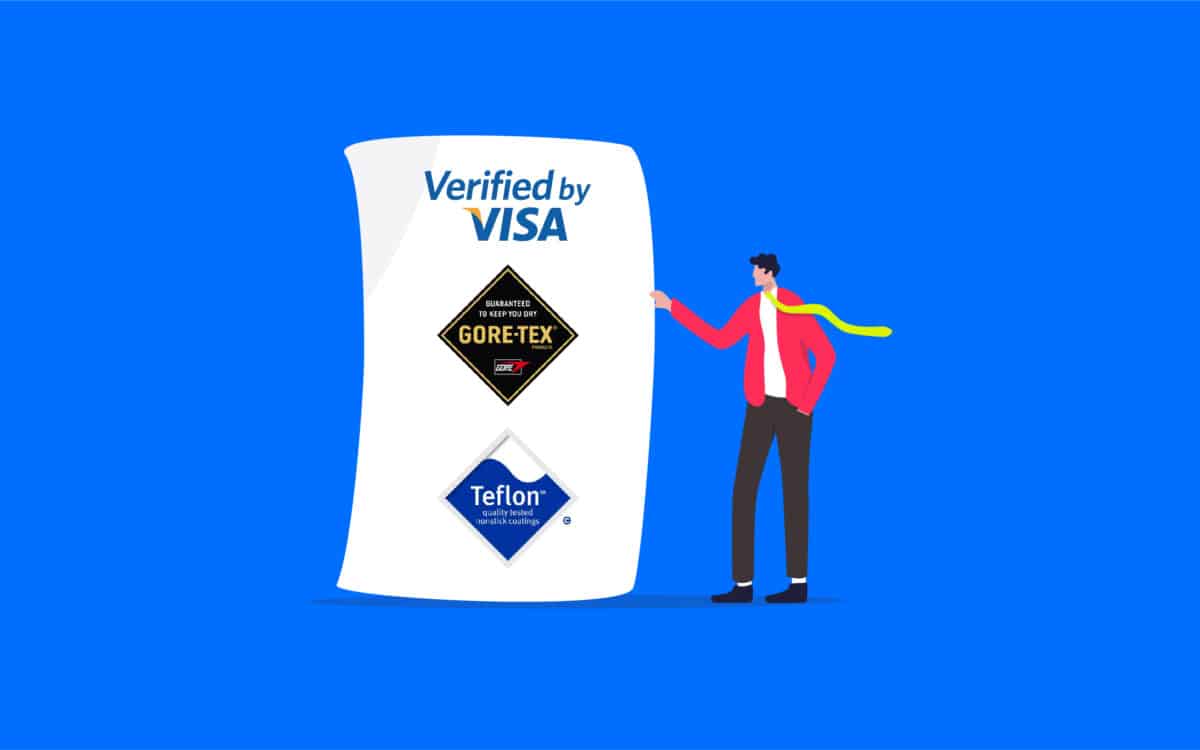What is ingredient branding? The complete ingredient branding definition

What is ingredient branding, and could it be a valuable strategy for growing your business? In today’s competitive world, there are a number of strategies business leaders can use to enhance the value of their company or product in the eyes of potential customers.
Ingredient branding is just one of the methods some major companies are using to stand out from the crowd. Essentially, it’s a strategy which involves either borrowing from the existing credibility and brand equity held by another company or using your USP to contribute to another brand’s product.
For instance, when Oreo worked with Cadbury to place Oreo pieces in chocolate bars, this was a form of “ingredient branding”. It involved adding the unique product offered by Oreo to a pre-existing product to make it more appealing to a wider range of customers.
The result is better brand reach for Oreo, as well as a boosted market presence thanks to Cadbury’s existing impact on the industry. At the same time, Cadbury gets to expand its portfolio and reach new customers in search of different flavors.
Let’s take a closer look at what ingredient branding really means.
What is ingredient branding? The basics
So, what is ingredient branding? Simply put, it’s a strategy which involves using branded components as part of another product, sold by a different company.
If you’re involved in an ingredient branding partnership, you might offer components of your own product or service to another company to add to the items they create.
For instance, Intel allows Dell to build computers with Intel technology inside and advertise those products with the “Intel Inside” logo. This strategy positions Intel Technology as another reason to purchase a Dell product.
Ingredient branding can also work in the other direction. In other words, a company can “license” technology, items, or product component from another business to include in their items.
Therefore, a new tablet company could license the Android operating software from Google and advertise its products with the “Android” label.
Many ingredient brands don’t sell the ingredients they offer to other companies direct to the public. Instead, they focus on highlighting the value of their solution as an “additional factor” in the construction of another company’s products.
For instance, Teflon sells its non-stick coating to frying pan and cookware companies. Gore-Tex sells its waterproofing technology to clothing brands, and companies selling outdoor accessories.
The idea of ingredient branding is to grow market share for both companies involved. The company selling access to the ingredient gets to reach a huge number of customers and demonstrate its thought leadership in a particular industry.
The brand purchasing the ingredient gets to boost the value of its product by including an ingredient customers may already be familiar with. For example, a lot of businesses buying computers will automatically search for the “Intel Inside” logo.
How to define ingredient branding
Why does ingredient branding work?
Ingredient branding is essentially a technique used to grow and increase market share. It works because the companies offering the ingredients to other companies invest a lot of time and money into making sure their products have a strong reputation.
Teflon coatings immediately make cookware more appealing to buyers because customers know the company is a pioneer in the non-stick field.
By using Teflon coating on pans and similar products, companies selling kitchen products don’t have to spend as much time and effort proving their own proprietary technology is just as good. They can leverage the existing credibility the brand ingredient they’re using already has.
Companies hoping to sell their ingredients to other companies as part of an ingredient branding strategy put a lot of effort into building a lot of image around the product. For instance, Intel’s “Intel Inside” has benefited from its own marketing campaigns, its own logo, and plenty of careful branding.
By creating the right image around an “ingredient”, a company can position itself not just as a supplier of critical products or components to other B2B buyers, but as a crucial partner.
It’s a great way for companies to position themselves as a value-added resource for a business, rather than just another potential link in a supply chain.
Of course, there are risks with ingredient branding too. Similar to co-branding strategies, ingredient branding puts a company’s identity in close connection with other organizations.
If something goes wrong with the business you choose to lend your ingredients to, and their reputation is tarnished, there’s a risk your reputation could suffer too.
Examples of ingredient branding
Ingredient branding examples are present in virtually every industry, from fashion and food to customer electronics and finance. We’ve already mentioned perhaps the most obvious ingredient branding example above: Intel Inside.
Intel wanted to position itself as a premier provider of technology for computing systems, so it built an “ingredient brand” around its chips.
By developing a unique logo and marketing campaign, Intel was able to position itself as a way for companies to add new value and credibility to the computing devices they made. Similar technology companies have taken a similar approach.
Dolby now lends its audio technology to all kinds of television producers, automotive companies, and other consumer brands.
Companies showcase the Dolby “Atmos” technology logo as a badge of honor on their products, to highlight their focus on excellent audio quality.
Some other great examples of ingredient branding include:
- Verified by Visa: A seal of approval for secure financial transactions.
- Gore-Tex: The industry-standard technology for waterproofing.
- Teflon: The number one choice for non-stick products.
It’s very common to see ingredient branding in the food and beverage industry too. Cadbury’s Chocolate regularly includes ingredients from other food companies in its bars, like Crunchie, Diam and Oreo.
All of the best examples of ingredient branding come from companies focused on building a clear and reputable identity for the ingredient they’re selling, as well as their wider business.
Is ingredient branding the same as co-branding?
Because ingredient branding involves combining elements from a different brand with an existing business or product, it’s often confused with “co-branding”.
While both forms of branding involve a balance between two or more companies, there are some significant differences between co-branding and ingredient branding.
With co-branding, there’s a more equal partnership between the two companies. With ingredient branding, a feature is embedded into another product in a way which may not be immediately obvious.
You wouldn’t know a pan had a Teflon coating, for example, until you saw a label or sticker telling you this. The focus is on bringing the benefits of the feature into the product, while still keeping the main focus on the brand selling the item.
With co-branding, the focus is equally shared between both brands. When Apple and Nike paired up to create new versions of the Apple watch, the elements of the Nike brand identity were just as clear in the products as Apple’s brand identity.
The partnership went beyond simply borrowing certain design elements or key technology features.
With co-branding, two companies work together in partnership, often to create new products or variations of products you couldn’t get elsewhere. Even the marketing and advertising strategies used to support co-branding initiatives are careful to draw just as much attention to both companies.
The balance in ingredient branding is a lot more uneven. While the ingredient brand does get some attention, it’s not the main focus of the initiative.
Could ingredient branding help your business?
Now you know the answer to “what is ingredient branding?” you could be wondering whether it’s a good solution for growing your business. Ingredient branding can be a powerful tool, but it might not work for everyone.
The ingredient you’re offering as an “ingredient brand” needs to be highly differentiated, which means investing a lot of time and effort into creating a brand around the feature.
You also need to dedicate significant time to proving the value of whatever you have to offer. It can take a while to convince other companies your product will make the items they build better.
If your ingredient isn’t prominent enough to capture the attention of other companies, however, you may find your business could benefit from leveraging the impact another ingredient can provide.
Including a well-known component or feature in your products could help you to capture the attention of a wider audience, and earn the trust of your customers.
Fabrik: A branding agency for our times.

We’ve built our reputation, building brands for other people.
Do you need to bring a new brand to life or breathe new life into an existing one? If so, let’s start a conversation














